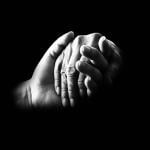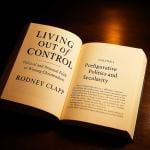A prayer service for peace in an historic Lutheran church in the East German city of Leipzig 20 years ago triggered the chain of events that exactly a month later led to the opening of the Berlin Wall.
As people gathered after work on the afternoon of 9 October 1989 in the Nikolaikirche (St Nicholas’ Church) and three other inner-city churches in Leipzig to pray for peace and democracy, the signs of potential violence were uppermost in most people’s minds.
Two days earlier, as Soviet leader Mikhail Gorbachev was in East Berlin for the 40th anniversary celebrations of the East German state, pro-democracy demonstrations there had been put down with force.
Many East Germans had fled the country in the summer of 1989. Those who wanted to stay and force reforms at home started organizing peaceful demonstrations and prayer meetings.
The Nikolaikirche had been holding peace prayers each Monday since 1982, a time of tension in Europe over the deployment of nuclear weapons. The prayers became a focal point for East German opposition activists.
After the 9 October services in Leipzig, an estimated 70 000 people poured into the city centre, connect in a full circle on a ring road around the downtown area.
“There were too many of us that night to arrest, the prisons were already full,” Jochen Lässig, one of the founder members of the reformist group Neues Forum in Leipzig told Ecumenical News International.
Before the prayer service took place, however, ominous warnings had appeared in Leipzig’s communist-run media suggesting that armed force would be used to suppress demonstrators. Local doctors and nurses reported that hospitals were building up blood reserves and being put on alert to deal with bullet wounds. . . .
Troops, military brigade groups and the police became engaged in conversations, and then withdrew, said Führer. “It was an evening in the spirit of our Lord Jesus for there were no winners and no losers. Nobody triumphed over the other, nobody lost face. There was just a tremendous feeling of relief.”
In front of the Leipzig headquarters of the Stasi – the East German secret police – demonstrators gathered, laid candles on the steps and sang songs. What few knew at the time was that inside the darkened building, most Stasi members were present and armed with live ammunition. They had orders to defend a strategic building. They had sandbags under the windows, still displayed today as it is now a museum.
Irmtraut Hollitzer, once curator of the museum, told ENI, “One stone through the window would have been enough to set off a bloodbath.”
The peaceful outcome of the Leipzig demonstration marked a turning point in the democracy protests, which gathered force throughout East Germany. This was followed by the opening of the Berlin Wall on 9 November 1989 and free elections in March 1990.
Would you say this was a legitimate work of the church in its relation with the state?












